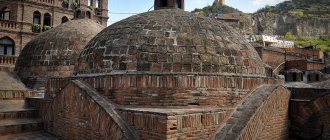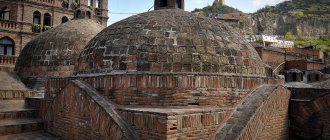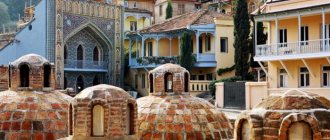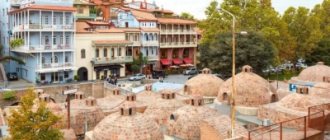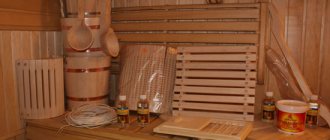The unique sulfur baths with natural thermal springs are one of the most popular attractions of the Georgian capital, this is its symbol, its heart. People in Tbilisi like to repeat the words of the poet Joseph Grishashvili that visiting Tbilisi and not visiting the sulfur baths is the same as visiting Paris and not seeing the Eiffel Tower.
I will not contradict traditions and will go to explore the Tbilisi baths to share my impressions with you and provide the most up-to-date information.
How did Abanotubani appear?
King Vakhtang Gorgasali discovered unusual springs while falconry. He released his falcon at the pheasant, which caught it and disappeared with the prey into the dense thickets. While searching for the birds, the hunter eventually found them in a hot spring. The falcon was safe and sound. The pheasant, according to one version, was completely cooked. According to another version, the king witnessed an amazing spectacle. The water healed the pheasant’s wounds before our eyes: it turned out to be healing.
Georgian legends are picturesque and allegorical. Nevertheless, the monument to the falcon, guarding its prey and awaiting its owner, became a symbol of an entire area of bathhouse complexes that grew up around the first bathhouse, built by order of the king immediately after the historical hunt.
Monument to the legendary Georgian king Gorgasali in Tbilisi
The famous Tbilisi baths were built, decorated and modernized over many centuries . Beginning in the seventeenth century, their number increased, reaching sixty by the end of the nineteenth century. After the collapse of the Union, the baths were privatized under the condition that their functional purpose was preserved. Today, about a dozen different private baths remain available to tourists . The main thing in them is still healing water, which provides a healing effect on the body, improves mood and overall tone. However, each of the baths has its own history and its own characteristics.
A little history
Sulfur baths, or rather sulfur springs, are considered a historical place in Tbilisi and its heart. After all, according to legend, Prince Vagtang Gorgasali, while hunting, released his faithful assistant falcon to catch a pheasant. The birds disappeared into the forest, and when the prince found them, he saw that the caught pheasant had fallen and boiled in hot water.
Rejoicing at such a rare find, he ordered the construction of a bathhouse in this place, from which the city was formed. No one knows whether this legend is true or not, but the sulfur baths definitely became the basis for the construction of the city, which was originally called Tiflis, which means warm in Georgian.
The first memories of the warm city date back to the 4th century. Over the centuries, the baths, like the city itself, were destroyed and rebuilt many times. In addition, they were often renamed, the owner changed, and the name changed.
Today, their appearance rarely changes; they try to preserve their historical heritage. But there is so-called rebranding in the names, so sometimes the baths are called differently.
Back in Soviet times, water from the springs was supplied to houses in some areas of the city and residents used its beneficial properties every day, but now everything is private and paid for.
Orbelianovskaya bathhouse
This bathhouse is most often called motley. It is decorated with mosaics and is very similar to another Tbilisi building - a madrasah. “Blue” and “Pushkinskaya” bathhouse are also about her .
After reconstruction, the condition of the premises is very good; the inside is also decorated with nice tiles. The cheapest private cabin (plunge) costs 50 GEL and is suitable for one or two people. Separate rooms for 100, 130, 150 GEL per hour. Elite apartments – 300 GEL per hour. The water changes constantly, the temperature is about 37 degrees. Reservations can be made on the website chreli-abano.ge.
Quote from Alexander Sergeevich Pushkin on the walls of the baths
The Orbelian bathhouse was very popular in the nineteenth century. It is believed that Alexander Pushkin and Alexandre Dumas visited it . The Russian poet left an enthusiastic review of his visit. He argued that “neither in Russia nor in Turkey there is anything more luxurious.” Both he and the father of the three musketeers were most impressed by the special Tiflis massage and peeling.
Today, the massage, which is offered to each visitor in the Orbelian baths for 10 GEL, is symbolic in nature and serves as nothing more than an addition to the peeling procedure.
Verified excursions
In order not to risk taking excursions from the “best guides” of Georgia somewhere on Freedom Square. No, we are not against it, but it will not always be an associate professor of history or at least a person who knows the real facts. You may be dissatisfied for a lot of money.
Therefore, we recommend using the Tripster service, where all guides have ratings and real reviews from people. In addition, you will be able to plan your day in advance and familiarize yourself with the excursion program. It's convenient, reliable and no more expensive than on the street. Payment is made on the website, so no one can deceive you either.
Here is the current selection for Tbilisi:
Bathhouse No. 5
Equipped during the Soviet era, it retained the flavor of that time and the historical sign . The name attracts tourists expecting vintage style and budget prices. This is partly true: half of the bath complex is common rooms (for women and men).
Individual rooms differ in the degree of comfort and, accordingly, in prices. Prices in the general department start from 4 GEL per hour in the women's department and 5 in the men's department. Cabinets for 100, 130 GEL. We have our own “Pushkin number”.
There are opportunities here to undergo the necessary wellness procedures (traditional rubbing with a mitten 10 GEL, improved 20 GEL), there are options with additional services and beautiful decoration, but for fans of the luxury style, within the once common complex there are separate rooms with independent entrance, connected with “Bathhouse No. 5” service passages.
The second part of the bath complex is better known as the VIP zone. If you walk along the embankment to Aliyev Square, you will see the entrance to bathhouse No. 5. A separate entrance to the bathhouse for special guests is nearby.
Bath VIP
This room, which is the only spacious room with a swimming pool and sauna, has been renovated in an elite manner. They monitor hygiene very carefully, although it is known that water with hydrogen sulfide itself has a strong disinfecting effect. Many additional amenities are provided.
These bizarrely shaped structures are the roofs of bathhouses. You can walk between them
How to get to the Abanotubani district from the center of the capital of Georgia?
Consider the option of traveling or traveling to Orbeliani from the city center, and specifically from Freedom Square.
On foot
The walking route is 1.3 km long and takes approximately 20 minutes.
Most of the journey takes place along the walking street. Kote Abkhazi, on both sides of which there are several attractions and countless cafes and boutiques. Follow it straight all the time until at the end you see the street. Abano (bathhouse). You can also walk to the baths along the eastern bank of the Kura :
- Walk a little along Kote Abkhazi to the Peace Bridge.
- Cross it to Rike Park, walk along it to the European Square (landmark is a huge monument to Vakhtang Gorgasali on a horse and the church behind it).
- At the square, cross the river along the Metekhi bridge and turn onto the street. Abano.
By car
Distance 2.3 km:
- on the street Pushkin to st. Baratishvili;
- along it across the Baratishvili bridge we move to the eastern side of the Kura and find ourselves on the street. Noe Jordania Bank and we drive along it to the European Square;
- at the square we turn onto the Metekhi Bridge and drive along it to the street. Abano.
If there are no traffic jams, the journey will take 5-7 minutes.
By bus
There are no metro stations near Abanotubani . But there are buses going there with the numbers:
- 31;
- 44;
- 50;
- 55;
- 71;
- 80;
- 102.
Ticket price is 50 tetri.
Taxi
The cost of a taxi within the center varies between 3-10 lari . But it’s better not to spend this money and walk. Whichever direction you approach the baths from, there will always be something to see along the way.
Bathhouse "Bakhmaro"
Other names are “Gulo” or “garrison bathhouse”. In Soviet times, it was intended for both personnel and officers and generals . Today it consists of five separate rooms. It was the common room for soldiers that today became the basis for the most expensive elite room, completely changed after a major renovation. This number can be viewed, but it is expensive to order (200 GEL). However, if you have a large company , this option is worth considering. The hall can accommodate up to 15 people.
The level of comfort and prices in other rooms vary, but all have been well renovated. Prices from 30 to 200 GEL. For a group of 4 people, rooms usually cost 80 GEL. To get to Gulo, you can go through the roof of the bathhouse of King Heraclius.
Queen's Bath
The entrance is located in the same park, a little higher than the entrance to Fantasia. This bathhouse has no rooms; it consists of two men's and one women's rooms. How to behave in the general ward?
- Tickets can be purchased at the entrance.
- We give the ticket to the bath attendants.
- We put clothes in the locker.
- In the main hall, we wash ourselves under running water from a pipe until it is clean.
- We take a dip in the pool for the first five minutes. The optimal time to visit a public bath is midday, at which time the water temperature is most suitable. We relax on the marble shelves. After resting, we dive again, and so on four to five times. The public bath is open all day, with one ticket you can stay there from early morning until evening.
General information
The sulfur baths of Tbilisi are concentrated in the Abanotubani district, not far from the Juma Mosque and the Narikala fortress, along Abano and Joseph Grishashvili streets. Most of them are located under stone domes in underground rooms; there are also free-standing buildings. Inside there are general sections (separately for men and women) with swimming pools, showers, relaxation rooms, or separate rooms with their own swimming pools. Some baths have both shared and private rooms, while others have either/or. The water in the pools comes from sulfur sources, the temperature is from +37 °C.
It is recommended to immerse yourself in sulfurous water for a maximum of 4 times for 10 minutes (more is harmful). Indications: healing the skin, respiratory tract, relaxation, strengthening the immune system. Contraindications - diseases of the liver, kidneys, biliary and urinary systems, asthma, tuberculosis, heart failure, angina pectoris, ischemia, cerebral atherosclerosis, epilepsy, varicose veins, oncology, etc.
Bath of King Heraclius
After the privatization of Tbilisi baths, part of bath No. 7 was provided with a separate entrance. It was here that it was planned to make the most expensive VIP rooms. Today, the renovation of all four rooms here is still quite good, the rooms are separate, but the prices are average, as is the quality of service. The entrance to the bathhouse of King Heraclius is across the stream next to the Orbelian bathhouse. Sign “Sulfur Bath”.
Bath attendant's work
What are the benefits of hydrogen sulfide springs and sulfur baths?
In the mid-twentieth century, the nature of the effects of hydrogen sulfide baths on the body began to be actively studied. In 1938, a special medical center and balneological resort was built. It is located at house 9 on Gorgasali Street. Scientists conduct treatment courses and conduct scientific research.
In addition to general health improvement and rejuvenation, hydrogen sulfide baths have shown effectiveness in the treatment of skin diseases (eczema, psoriasis), diseases of the musculoskeletal system, cardiovascular system, early stage atherosclerosis, varicose veins, neuralgia, radiculitis. Bathing in Tiflis baths helps restore the functions of the reproductive system.
Carrying out therapy for a long time must be agreed with a specialist and strictly dosed. Visiting hydrogen sulfide sources is contraindicated if there is a risk of heart attack, asthma, tuberculosis, heart disease, stomach ulcers, or cancer.
Useful tips
- Bathing accessories (towel, slippers) in all baths are provided for a fee, but you can bring your own.
- The cabin rental time is usually limited to one hour, which is quite enough. Four immersions in hydrogen sulfide water are enough for the full effect.
- It is best to choose the evening time to visit the bathhouse - after the procedure, pleasant exhaustion sets in, and its best continuation is healthy sleep. This is what the locals usually do.
- Evening time in any bathhouse usually needs to be booked. It is best to do this during a personal visit, after first making sure of the quality of the service. Reservations are made only upon full payment.
- For those who are on vacation and have time, the morning hours are also quite suitable. The water may be too hot, but there will be fewer people, and you will be shown all the cabins that you can choose according to your taste.
Hydrogen sulfide baths
Sulfur baths consist of hydrogen sulfide or sulfide baths, which are the most common part of balneotherapy procedures. The water of the springs contains free hydrogen sulfide, which, when it enters the body through the skin and evaporates through the respiratory tract, has a positive effect on it. There are three types of substance concentration:
- insignificant;
- optimal;
- strong.
The baths themselves are classified according to their arrangement:
- are common;
- local - two-chamber, four-chamber.
It is also useful to undergo healing through the respiratory tract. The ions of this gas have a therapeutic effect by stabilizing the oxidative and rehabilitative processes in the human body that they provoke. Enhanced cell restoration under the influence of hydrogen sulfide fumes is a huge advantage of Tbilisi sources over any others. After visiting the bathhouse, bathing clients experience normalization of blood circulation and blood pressure, and stabilization of the ventilation function of the lungs.
You can take baths both in the fresh air and in specially equipped rooms with flow-exhaust ventilation. The duration of the procedure lasts no more than 15 minutes, no more than once every two days. In order for the therapeutic course to have the desired effect, it is necessary to conduct at least 10 visits to the bathhouse. Mandatory rest after visiting a hydropathic bath is required for at least half an hour.
